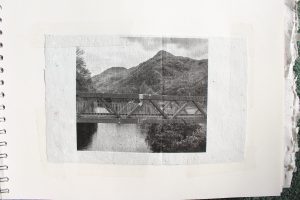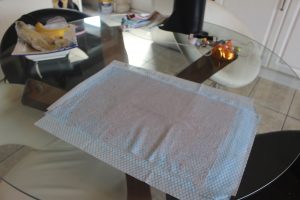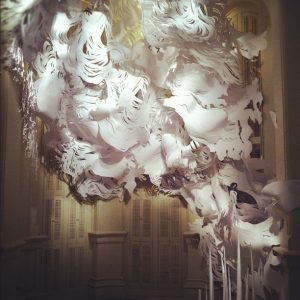The next experiment I did was a tape transfer.
I began by printing off one of my photographs onto normal paper and placing rows of cellotape over the image. I then put the photo in a tub of water for a couple of seconds. However this experiment wasn’t successful because when I placed the photo in the water all the ink spread and when I tried to scrape off the paper from the tape the whole image came off with it. I tried to do this experiment three times and each time they failed. Below is an image of an unsuccessful experiment.




























































